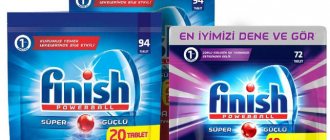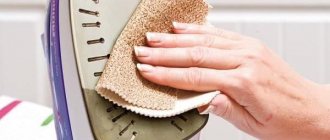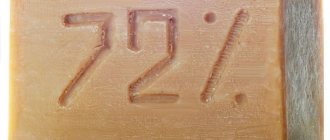GOI polishing paste is a product that has a wide range of applications in everyday life, in enterprises and car service stations. GOI paste is classified by number depending on the percentage of chromium oxide and abrasive particles.
GOI paste - what is it?
A special abrasive polishing agent used for polishing glass, metal, ceramics, plastic and other materials. It was developed by specialists from the State Optical Institute. When figuring out what GOI paste is, it is worth noting that it is suitable for use in both industrial and domestic conditions. Gives polishing objects a mirror shine, eliminates turbidity and dullness of surfaces.
GOI paste - composition
The main component of this polishing agent is trivalent chromium oxide with the addition of binders and auxiliary substances. These can be: kerosene, soda, fat, silica gel. Depending on the concentration of chromium, GOI grinding paste can be light green and have high abrasive abilities, or rich green, almost black, intended to add shine and final polishing to surfaces. GOI paste is a universal cleaning product, produced in the form of bars, viscous contents or impregnation.
Polishing plastic and glass products
It’s amazing but true: GOI paste can be used to restore old equipment to its former beauty! To polish plastic products, you should use GOI paste type No. 2, since more abrasive types can damage soft plastic.
We recommend: How to paint a leather chair or sofa at home?
It is worth noting that when polishing equipment, kerosene, gasoline and running water are not used. Only abrasive is applied to the rag, without the use of auxiliary products. The process itself is no different from polishing other materials and objects.
What is GOI paste used for?
The scope of application of this paste is quite wide, both in everyday life and in production. The main purpose is to polish metal products (aluminum, cast iron, steel, silver). This grinding paste does an excellent job of cleaning antique coins and removing corrosion. Fishermen use it to clean artificial fishing gear, thereby increasing its shine. In everyday life, GOI paste is used to polish knives, forks, spoons, and scissors. Restores the shine and shine of silverware. Hunters use this abrasive to polish gun barrels.
GOI paste is also used for polishing plastic and glass objects. In the automotive industry, it is used to remove scratches and clouding on headlights and windshields of cars. This abrasive helps restore and add shine to jewelry, costume jewelry, and watch glass. In industry, it is used in galvanizing shops for grinding and polishing objects made of ferrous and non-ferrous metals. This processing is carried out using polishing machines using felt wheels.
Varieties of Green Pasta
We’ll talk about how to use GOI paste correctly below. Now let's see what varieties of this material exist. Once upon a time, three types of GOI green paste were produced. And today, in a store or online, you can purchase a product with different sizes of abrasive particles:
- No. 4 – intended for initial rough polishing of surfaces;
- No. 3 – gives the surface a matte appearance, while no strokes are visible on it;
- No. 2 and No. 1 - used for finishing and give a glossy surface.
The green variety was produced both in solid bars and in the form of a more liquid paste-like mass (in boxes). The popularity of both types is due not only to the high quality of polishing, but also to their more than affordable price.
Types of GOI paste
Depending on the percentage of chromium oxides and abrasive properties, the grain size of the GOI paste can be from fine to coarse. They are identified by numbers:
- GOI paste No. 4
– has a light green color. The percentage of chromium is 75-85%. This paste is used to remove scratches and make the surface matte. - GOI paste No. 3
– green color. Chromium content 70-80%. Used for secondary sanding, giving an even shine without streaks. - GOI paste No. 2
– the color of the paste is dark green. The composition includes 65-77% chromium oxide. When polishing with this paste, a layer of 7-1 microns is removed, which gives the product shine. - GOI paste No. 1
– the color of the paste is almost black with a greenish tint. The percentage of chromium oxide is from 65 to 70%. Used for final polishing. The product acquires a mirror shine.
Foreign analogues
Today you can find imported versions of such pastes on sale. A very popular option is the French Dialux. The latter has a harder consistency and is worse applied to the skin of the whetstone when sharpening knives than GOI paste. Dialux is considered more convenient to use. It can polish metal surfaces much faster and with better quality. However, such pastes are more expensive. There are many more varieties of Dialux than GOI types. This product is produced in sticks packed in paper of different colors. You can use them to guide you in terms of using Dialux for a particular metal.
This paste is applied in approximately the same way as GOI, that is, with soft, smooth movements. However, when polishing knives or other steel parts, its layer should be thinner. In this case, the paste will work in conjunction with the skin. As a result, polishing efficiency will increase significantly.
Well, we hope we have answered the question of how to properly use GOI paste in sufficient detail. The polishing procedure using this product is quite simple. The main thing is to wash your hands thoroughly after polishing.
GOI paste - how to use?
All-purpose cleaner can be used as follows:
- Take a soft cloth (flannel will do). Soak it in gasoline.
- Apply the paste to the fabric and rub it on a metal or glass surface that is not related to the product being polished. This is necessary so that the grinding paste with large particles does not scratch the desired surface.
- Next, when the cloth with polish is ready, you can begin processing the product. This should be done without much effort, gently rubbing the desired area with a cloth until a shine appears.
- After finishing work, the workpiece must be wiped with gasoline or immersed in a solvent to remove any remaining paste.
How to polish metal with GOI paste?
Depending on the type of metal, cleaning with GOI paste varies. For steel products, special devices are used, but it is better not to clean gold and precious metals with this paste, as there is a risk of removing the top layer. Very often, GOI paste is used for silver cutlery. Let's take a closer look at how to polish silver with GOI paste:
- To begin with, silverware should be thoroughly cleaned with tooth powder.
- Then, in an enamel saucepan, mix a spoonful of grated laundry soap and tooth powder, as well as a couple of drops of ammonia in water. Place on the fire and when the solution boils, dip the products into it.
- Remove silverware and rinse in cold water.
- After drying, polish with GOI paste No. 1 or No. 2.
How to polish glass with GOI paste?
Many car owners know the wonderful properties of GOI paste and use it to remove minor scratches on car windows. To do this you need:
- Wash the glass with car shampoo, soapy water, or wipe with an alcohol-containing detergent, and dry.
- It is advisable to carry out glass polishing work with a special machine, and manually only remove the dullness.
- Mix gasoline with the paste at the rate of a drop per spoon of GOI paste.
- Place the resulting mixture on a polishing wheel and carefully work the desired area of glass.
- The polishing paste is applied according to the principle of overlapping scratch stripes.
- Polishing work is completed once the glass is smooth. GOI paste No. 1 and GOI paste No. 2 are suitable for such work.
How to polish plastic with GOI paste?
Plastic parts become scratched and dull over time. Polishing with GOI paste can restore the original shine to such surfaces. The sequence of actions is the same as for polishing glass:
- The surface is degreased and dried.
- Apply gasoline or motor oil to the felt circle of the machine or soft flannel or cotton fabric, mixing it with the paste.
- Gently rub the resulting mixture onto the plastic, periodically wiping off excess paste.
- Wash off the residue with gasoline or kerosene.
Preparation for polishing
The action of GOI paste consists of the work of small abrasive particles, which, through friction, erase irregularities from the surface. Before you start polishing, you need to prepare a small piece of soft cloth and soak it in gasoline (it is not necessary to use car fuel; gasoline for lighters will be enough). A small amount of paste is applied to the material. Using the prepared tool, you should first wipe the unnecessary metal surface to remove excessively large abrasive particles, otherwise the desired surface will not be polished, but damaged. You don't want to see a scratch on the surface after polishing, right?
How to soften GOI paste?
If stored for a long time without use, the polishing paste may dry out, but do not rush to throw it away. You can restore its polishing properties. You need to mix the paste with gasoline or any technical oil. To do this you need:
- Break off or chip off a piece of dried paste and grind into powder.
- Then mix the resulting powder with oil or gasoline.
- The resulting soft mixture can be used for its intended purpose.
- You can also use kerosene, acetone, and white spirit to soften the paste.
Harm of GOI paste
When working with this abrasive, the question may arise: is the use of paste toxic to health? GOI polishing paste contains up to 85% chromium oxide, which is considered a carcinogenic and toxic substance. However, hexavalent chromium, which is red in color, is dangerous and harmful to health, and the main component of GOI paste is trivalent chromium, which has weak activity in the human body.
When working with GOI paste, despite its safety, you should adhere to the following protective measures:
- Use a mask or respirator, especially when working with a polishing machine.
- Wear special clothing, as paste particles can settle on the fabric and be difficult to wash.
- It is advisable to wear gloves when working with the paste, as it may irritate the skin and cause wounds and cracks.
- When cleaning products that come into contact with food (silverware, dishes), you must thoroughly rinse them in a soapy solution. Wipe other items with a solvent (gasoline, kerosene, etc. will do).
Sanding plastic
Plastic sanding is used when it is necessary to remove deep damage that cannot be sufficiently smoothed out in other ways. Plastic is easy to grind due to its relatively low melting point. In the case of measured and careful work, the result will be a uniform matte plane in place of the deep furrows. To sand plastic, follow this algorithm:
- Clear the workspace of those tools and objects that will not be needed when sanding plastic.
- Prepare several sanding sheets of different grits.
- They check the functionality of the grinding machine; when this tool is not available, it is possible to enhance the grinding effect with the help of a soap solution.
- A plastic object previously degreased with acetone is placed on the work table.
Attention! Sanding is a leisurely task that requires care and precision in every action.
During the process, monitor the temperature, since overheating is contraindicated for the material. They gradually move from coarse-grained to fine-grained skins. After processing with each piece of sandpaper, wipe the treated area with a dry cloth, this will avoid defects and prevent flaws from being missed - plastic shavings sometimes hide a missed scratch.











